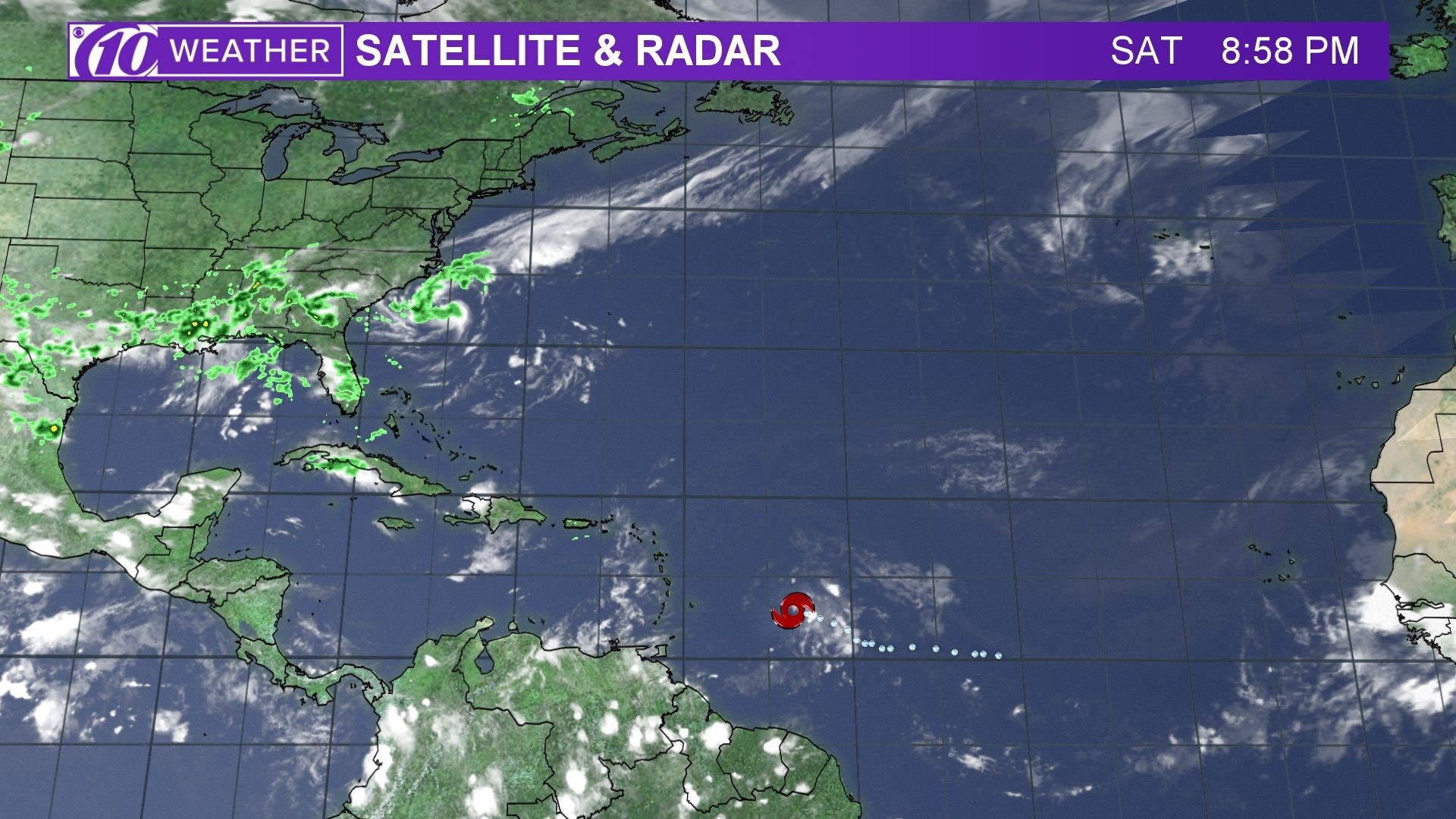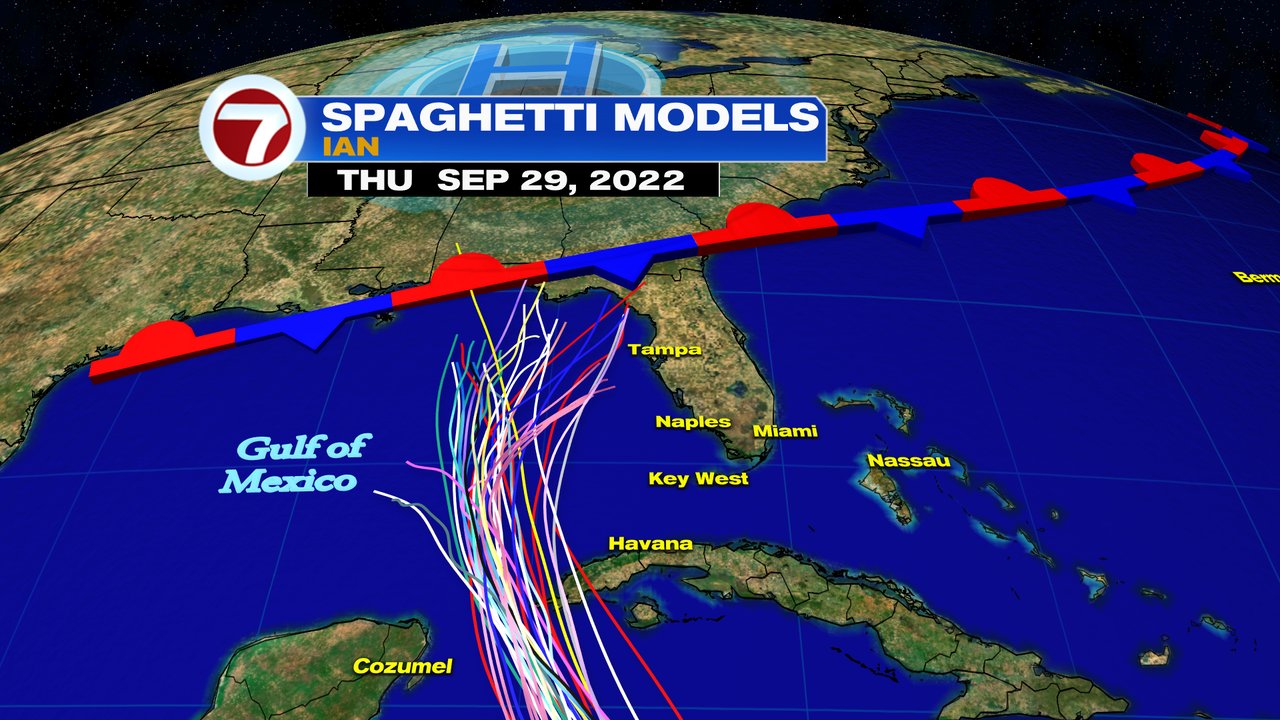Spaghetti Models: Hurricane Beryl Spaghetti Models

Hurricane beryl spaghetti models – Spaghetti models are a type of ensemble forecast model used in hurricane forecasting. They consist of multiple model runs, each of which uses slightly different initial conditions. This results in a range of possible forecast tracks, which are displayed on a map as a bundle of lines that resemble spaghetti noodles. Spaghetti models are used to provide a probabilistic forecast of a hurricane’s track, as they show the range of possible outcomes.
The Hurricane Beryl spaghetti models predict a possible path towards Puerto Rico. The models show a range of potential tracks, but all indicate a potential threat to the island. Residents of Puerto Rico should closely monitor the storm’s progress and be prepared to take action if necessary.
Spaghetti models have several advantages over deterministic models, which produce a single forecast track. First, spaghetti models provide a visual representation of the uncertainty in the forecast. This can be helpful for decision-makers, as it allows them to see the range of possible outcomes and make plans accordingly. Second, spaghetti models can help to identify potential forecast errors. If the spaghetti models are widely spread, it means that there is a greater degree of uncertainty in the forecast. This can be a warning sign that the forecast may not be reliable.
Hurricane Beryl spaghetti models predict the storm’s path, but for the latest and most accurate information on the barbados hurricane , check official sources. These models can help us understand potential hurricane tracks, but it’s crucial to stay informed and follow the guidance of local authorities.
However, spaghetti models also have some limitations. First, they can be computationally expensive to run. Second, spaghetti models can be difficult to interpret. The large number of lines can make it difficult to see the overall trend of the forecast. Third, spaghetti models are not always accurate. They can sometimes produce unrealistic forecast tracks, especially for long-range forecasts.
Examples of Spaghetti Models for Hurricane Beryl, Hurricane beryl spaghetti models
The National Hurricane Center (NHC) produces spaghetti models for all active hurricanes. The spaghetti models for Hurricane Beryl are available on the NHC website. The spaghetti models for Hurricane Beryl show a range of possible tracks for the hurricane. The models show that Hurricane Beryl could make landfall anywhere from the Florida Panhandle to the Carolinas. The NHC is urging residents in these areas to monitor the progress of Hurricane Beryl and to be prepared to take action if necessary.
Interpreting Spaghetti Models for Hurricane Beryl

Spaghetti models are an essential tool for meteorologists and hurricane forecasters to predict the path of a hurricane. They are a collection of computer simulations that show the possible paths a hurricane may take, based on different initial conditions and model configurations. By analyzing these models, forecasters can gain insights into the potential risks and impacts of a hurricane and make informed decisions about evacuation and other preparedness measures.
Ensemble Forecasting and Improved Accuracy
Ensemble forecasting is a technique used to improve the accuracy of spaghetti models. It involves running multiple computer simulations with slightly different initial conditions and model configurations. The results of these simulations are then combined to create a more accurate forecast. Ensemble forecasting helps to account for the uncertainty in the initial conditions and model physics, which can lead to more reliable predictions of the hurricane’s path.
Step-by-Step Guide to Analyzing Spaghetti Models for Hurricane Beryl
To analyze spaghetti models for Hurricane Beryl, follow these steps:
- Gather spaghetti models from reputable sources, such as the National Hurricane Center or other meteorological organizations.
- Examine the spaghetti models to identify the range of possible paths for Hurricane Beryl.
- Look for clusters or groups of models that show similar paths. These clusters can indicate areas of higher probability for the hurricane’s track.
- Consider the ensemble mean, which is the average of all the spaghetti model runs. The ensemble mean can provide a more stable and reliable forecast of the hurricane’s path.
- Monitor the spaghetti models over time to track changes in the hurricane’s forecast path. This will help you stay informed about the latest developments and make necessary adjustments to your preparedness plans.
Hurricane Beryl’s Forecast Track

Hurricane Beryl’s forecasted track is influenced by a combination of steering currents and atmospheric conditions. Steering currents are the prevailing winds that guide the hurricane’s movement, while atmospheric conditions, such as pressure gradients and temperature differences, can also impact its path.
Spaghetti Model Projections
Spaghetti models are computer simulations that generate multiple possible tracks for a hurricane based on different initial conditions. These models provide a range of potential paths, helping forecasters assess the likelihood of various scenarios.
The latest spaghetti model projections for Hurricane Beryl show a range of possible tracks, with some models predicting a more easterly path towards the Lesser Antilles, while others suggest a more westerly track towards the Bahamas.
Factors Influencing the Track
Several factors influence Hurricane Beryl’s forecast track, including:
- Steering currents: The prevailing winds in the atmosphere guide the hurricane’s movement. Stronger steering currents can result in a more consistent and predictable track.
- Atmospheric pressure: Pressure gradients between areas of high and low pressure can influence the hurricane’s direction and speed.
- Temperature differences: Temperature differences between the ocean and the atmosphere can affect the hurricane’s intensity and track.
- Land interaction: If Hurricane Beryl makes landfall, it can interact with the terrain, causing it to weaken or change direction.
Interactive Map or Table
An interactive map or table can be used to visualize the spaghetti model data for Hurricane Beryl. This can help forecasters and the public track the hurricane’s progress and understand the potential risks.
The map or table should display the spaghetti model tracks, along with information on the model’s initial conditions and forecast uncertainty.